Here’s what you need to know about perennial geraniums vs others.
Geranium plants are some of the most-loved flowers around the United States. But there’s conflicting information that might make you ask: Are geraniums annual or perennial?
Most everyone knows about common garden geranium. Those bedding flowers are the annual geraniums with the huge lollipop-shaped flowers. But true geraniums are perennial flowers with a long lifespan pre-winter care.
By the end of this article, you will know:
The difference between the annual geranium plants and the lesser-known perennial geraniums
- USDA zones for growing geraniums
- The Latin names for perennial geraniums vs annuals (so you can shop for them confidently)
- The how-tos for planting geraniums
- How to care for geraniums
- Tips if you want to overwinter geraniums indoors
I don’t just blog about gardening – I’m the co-owner of a lawn care and landscaping company. We take care of garden beds for clients. I’ve done firsthand research and dug my fingers into the flower beds of hundreds of happy clients.
Read on to learn about perennial geranium plants.
Annual Versus Perennial Geraniums
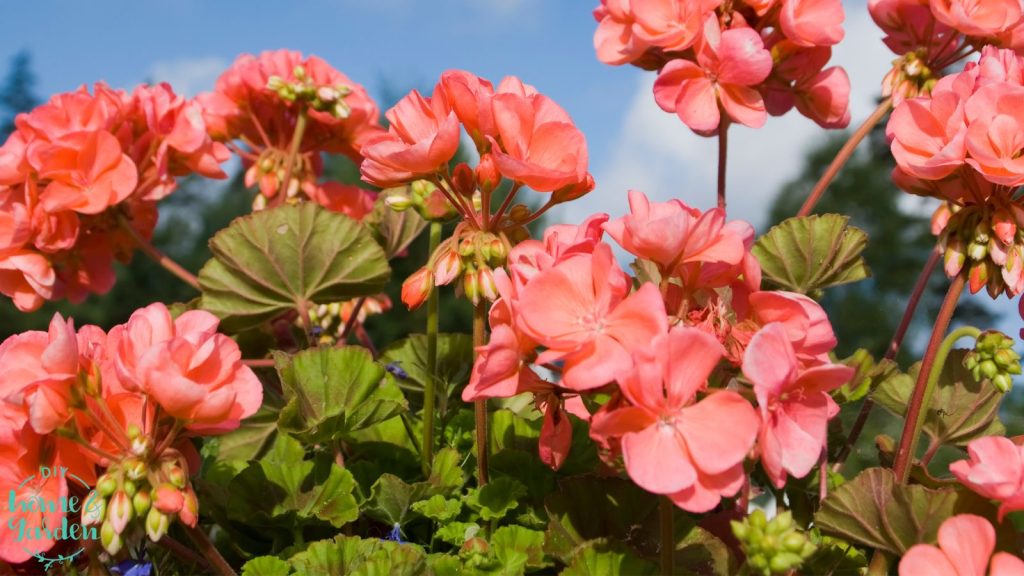
Annuals (Pelargonium)
Annual geraniums (Pelargonium) are famous for their bright, large blooms and ability to flower all season. They are usually treated as annuals because they don’t survive frosty temperatures. You’ll often see them in garden beds, pots, or hanging baskets. These geraniums have thicker, almost succulent-like stems, and their flowers come in various colors, like red, pink, white, and orange.
Annuals, such as ivy and zonal geraniums are native to the country South Africa but have adapted to the United States.
Annual Geraniums Come in Lovely Colors
Most gardeners grow annual geraniums for vibrant colors from early summer to early fall. Common colors of these regal geraniums include:
- Bright red
- Deep pink
- Coral
- Salmon
- Pure white flowers (my favorite)
- Lavender
- Deep burgundy
- Orange (less common but available in some varieties)
Hats Off to Regal Geraniums
Regal geraniums, also known as Martha Washington geraniums (Genus Pelargonium domesticum), are a distinct type of geranium prized for their large, showy blooms and rich, velvety petals. They differ from typical annual geraniums with their unique flower shapes and patterns, often resembling azaleas in appearance.
Characteristics of Martha Washington Geraniums:
- Bloom Colors: Regal types come in stunning shades of deep purple, burgundy, magenta, pink, white, and bi-color combinations. Their flowers often have contrasting dark spots or streaks on the petals, adding to their dramatic appearance.
- Foliage: The leaves are typically serrated, broader, and have a slightly crinkled texture, making them more ornamental than other geranium varieties.
- Bloom Season: Regal geraniums thrive in cooler weather and usually bloom in spring and early summer. Compared to other geranium types, they can be a bit fussier about heat and might stop blooming in the hottest summer months.
These geraniums are often potted plants indoors or on patios- easily protected from extreme temperatures. Their striking colors make them a favorite for gardeners looking to add a touch of luxury.
Regal types are typically annuals in most regions. They cannot survive freezing temperatures, so if left outdoors in colder climates, they will not return.
However, in mild climates (USDA zones 9-10), they can be treated as perennials and may last for several years. If you live in a colder region but want to keep them, you they must be overwintered indoors before the first frost treated as houseplants through the winter. They can continue to bloom indoors with proper care and be moved back outside after the last frost.
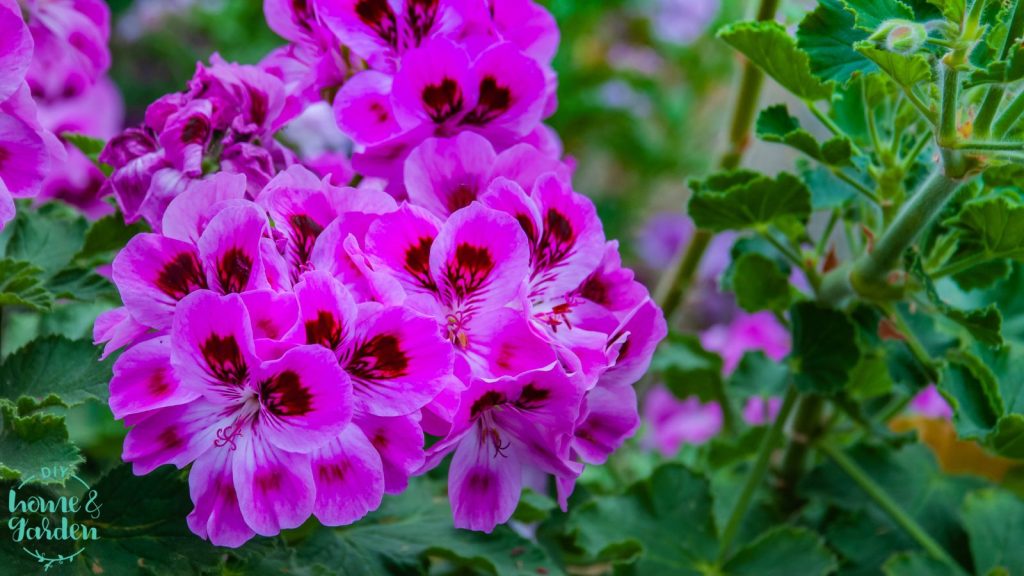
Perennials
On the other hand, perennial geraniums (true Geranium) are hardier, offering more delicate flowers and a sprawling growth habit. They can survive year after year, even in colder climates, as long as they’re planted in suitable growing zones.
While they may not have the oversized blooms of their annual counterparts, perennial geraniums make up for it with their resilience and long-lasting beauty. They create lush ground cover and have a more natural look, which blends beautifully into mixed borders and cottage gardens. Added bonus: They enjoy great disease resistance.
Overview of Perennial Geraniums
Perennial geraniums, also known as hardy geraniums, are true members of the Geranium genus, not to be confused with their more famous annual relatives. They’re beloved for their ability to survive multiple seasons, providing consistent beauty in your garden without needing to be replanted. These plants offer a range of flower colors, from soft pastels to vibrant blues and purples, and their foliage adds an extra layer of texture and interest.
Unlike annual geraniums, perennial varieties are more tolerant of temperature changes, making them ideal for gardeners who want a low-maintenance, eye-catching flowering plantg. With the right care, perennial geraniums will reward you with blooms year after year, proving themselves to be reliable and easy-going plants.
They’re natives of Europe and the Mediterranean regions of Asia.
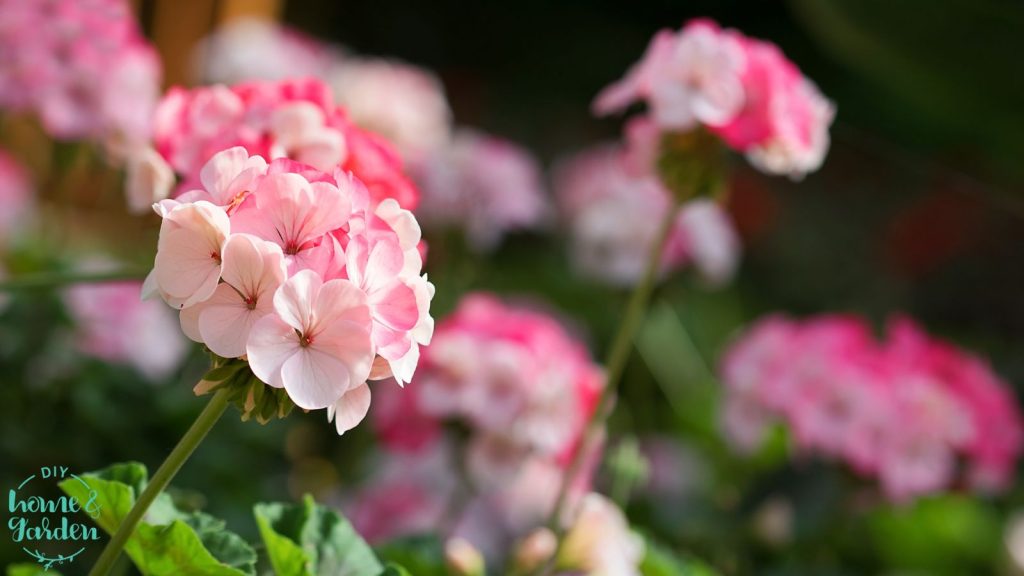
Perennial/True Geranium Colors
Most geraniums that are perennials have softer, muted shades. You’ll find:
- Soft pink
- Pale to bright purple
- Light blue to bluish-lavender
- White
- Magenta
Some perennials have multi-colored or veined petals, adding an extra layer of interest to their blooms. The color range makes geraniums adaptable to various garden styles.
Where Should My Perennial Geraniums Live?
Ideally, they flourish in USDA hardiness zones 4 through 8, meaning they have exceptional heat tolerance but can also tolerate temperatures as low as -30°F. This makes them a great choice for many parts of the United States.
They enjoy a sunny location or partial shade, with direct sun in the morning and afternoon shade in a hotter region. In cooler areas, they can handle a sunny spot throughout the day. Make sure the soil drains well, as these plants don’t do well in soggy conditions. If you have a spot with rich, slightly moist soil, your geraniums will thrive.
Planting Perennial Geranium Plants in a Flower Bed
When planting geraniums in a flower bed, make sure the soil is well-prepared. Loosen it to about 12 inches deep and mix in some compost to ensure it’s nutrient-rich. Space your plants about 12 to 24 inches apart, allowing them to spread out as they grow.
Dig a hole deep enough to accommodate the root ball, then place it in, ensuring the roots’ crown is leveled with the soil surface. Water the plant thoroughly after planting to help it settle into its new home. Mulching can help retain moisture and keep weeds at bay, but don’t let the mulch touch the stems to prevent rot.
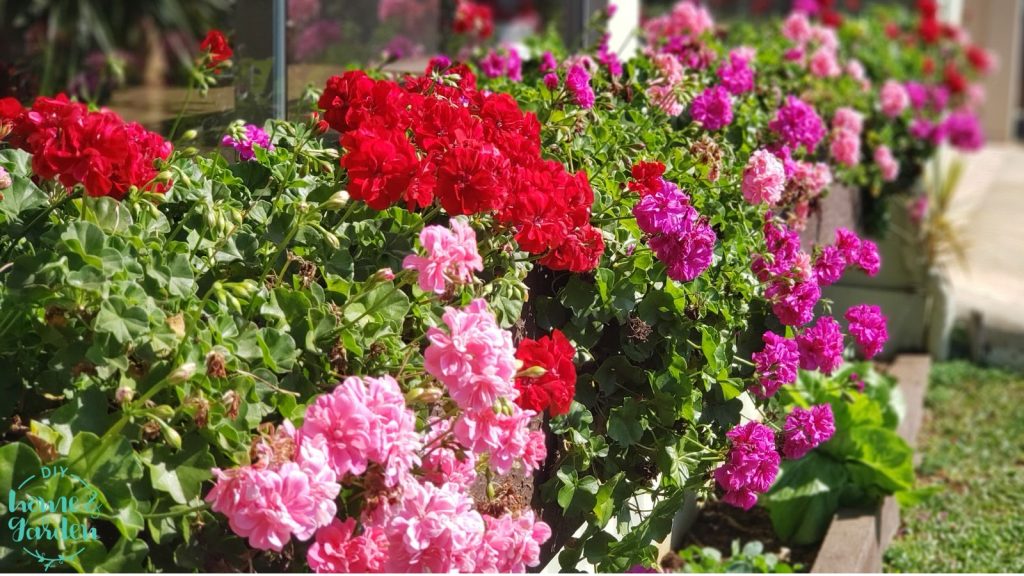
Geraniums in Container Gardens
Perennial geraniums are great container plants. Choose containers with good drainage holes, as these plants hate sitting in waterlogged soil. Fill the container with quality potting mix with some perlite or sand mixed in to improve drainage.
Plant your geraniums just like in a flower bed, ensuring they have enough space in the containers. Water thoroughly, but allow the soil to dry out slightly between waterings. Containers dry out faster than garden beds, so check your plants frequently.
Growing Them in Hanging Baskets
Perennial geraniums also look stunning in hanging baskets or window boxes. Choose a variety with a trailing habit, like ivy geraniums, which cascade over the edges. Like containers, ensure your hanging basket has drainage holes.
Use a light potting mix and avoid overpacking the basket with soil to prevent it from becoming too heavy. Keep containers in a spot with morning sun and afternoon shade, especially in hotter climates. Water regularly, as baskets can dry out quickly.
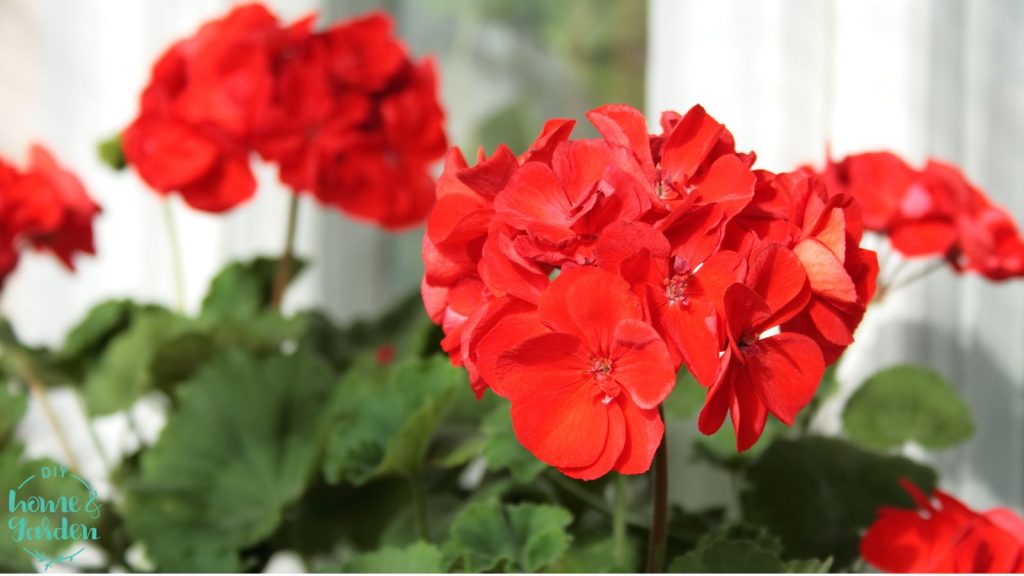
How to Overwinter Geraniums Indoors (colder zones)
If you live in a zone colder than 4, you might worry about your geraniums surviving the winter. But with a little effort, you can overwinter them indoors. Start by cutting back the stem to about half its size in late fall. Carefully dig it up, preserving as much of the roots as possible. Some gardeners save the cuttings and pop them in a propagation medium to get new growth.
Shake off excess soil, then pot it in fresh potting mix. Place the plant in a cool, well-lit area, like a sunny windowsill or an unheated sunroom. Water sparingly during the winter months, just enough to keep the soil from completely drying out. Many gardeners successfully move them back outside once the danger of frost has passed.
The Bottom Line: Annual or Perennial, They’re Lovely Flowers to Enjoy
Whether you prefer annual geraniums or perennials, these plants bring charm and color to any garden.
If you enjoyed this content, please be sure to follow DIY Home & Garden on social media. Happy gardening!


